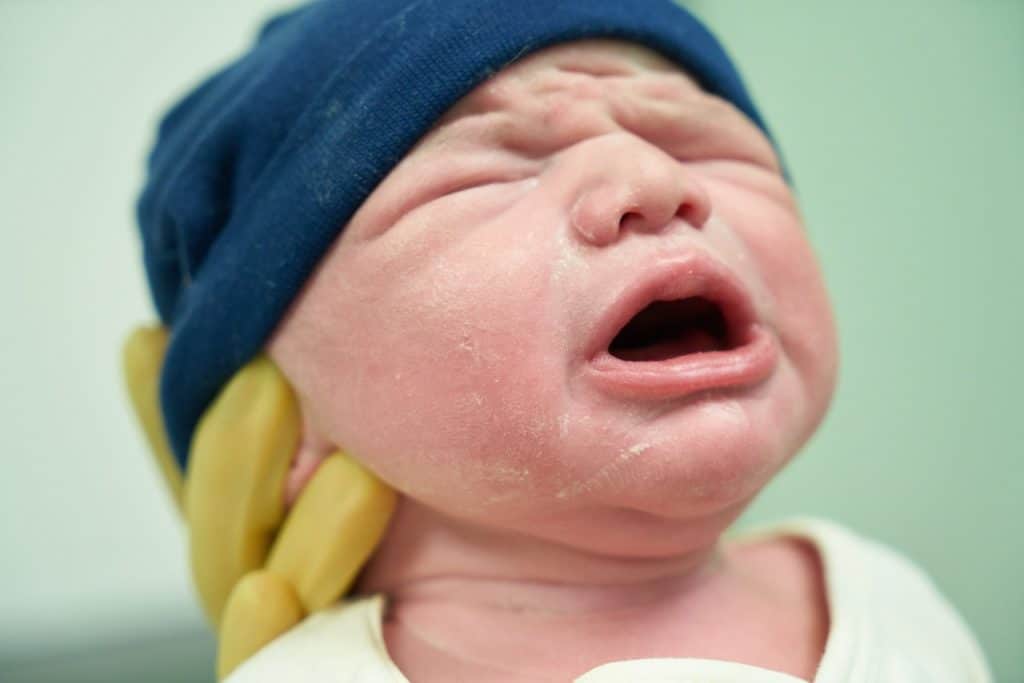
By clicking on either buttons, you are agreeing to our TOS and disclaimers and will be redirected to an affiliate cord blood banking provider. We might get financial compensation if you sign up with them through our affiliate links. Unlock your special discounts by adding your promo code.
CORD300 in the coupon field to get $300 OFF cord blood and tissue banking. OR cord200 to get $200 OFF if you are getting cord blood banking only.
Blood banking is a crucial process that involves collecting and storing blood for future medical purposes.
Over the years, advancements in technology have led to the emergence of umbilical cord and tissue blood banking, which involves the collection and storage of blood from a newborn’s umbilical cord and placenta.
While blood banking is essential, many expectant parents may wonder if the process is painful for their newborn.
As a professional in the field of medical technology, it is crucial to address these concerns and provide accurate information to assist parents in making informed decisions.
In this blog post, we will explore the topic of umbilical cord and tissue blood banking and the question of whether it is painful for the newborn.
We will discuss how the collection process works, the different methods of collection, and the potential side effects that the baby may encounter.
Along the way, we will explore the benefits of storing umbilical cord and tissue blood for future medical use and why it is a valuable investment for expectant parents.
1. No pain during collection process.
One of the most common concerns parents have when considering umbilical cord and tissue blood banking is whether the collection process is painful for the newborn and the mother.
However, it’s important to note that the collection process is painless and non-invasive.
The collection process is performed after the baby is born and the umbilical cord has been clamped and cut.
The collection procedure is similar to a routine blood draw and doesn’t cause any pain or discomfort to the mother or the baby.
The collection process is quick and takes only a few minutes, and the collected blood and tissue can provide valuable stem cells that can be used for various medical treatments in the future.
Overall, parents can rest assured that the collection process for umbilical cord and tissue blood banking is painless and safe for both the mother and the newborn.
2. Quick and simple procedure.
When considering umbilical cord and tissue blood banking, it is natural to have concerns about the procedure.
However, it is important to note that cord blood and tissue collection is a quick and simple procedure that is painless for both mother and baby.
The collection process takes place immediately after the baby is born, and does not interfere with the birthing process. A healthcare provider will use a sterile collection kit to collect the cord blood and tissue, which takes just a few minutes.
Most mothers report feeling no pain or discomfort during the process, and the baby is not affected in any way. Overall, the collection of umbilical cord and tissue blood is a safe, non-invasive, and painless procedure that provides families with a valuable resource for potential future medical treatment.
3. Pain-free for both mother and baby.
One of the major concerns for expectant mothers considering umbilical cord and tissue blood banking is whether the process is painful for both the mother and baby.
The good news is that the collection of cord blood and tissue is pain-free for both the mother and the newborn. The collection process takes place after the baby is born and the umbilical cord is already clamped and cut.
The blood and tissue are collected using a sterile, non-invasive kit that is provided by the blood bank. The procedure is similar to a routine blood test and does not pose any risk or discomfort to the mother or the baby.
Therefore, expectant mothers can confidently consider umbilical cord and tissue blood banking as a safe and pain-free option.
4. Safe and non-invasive process.
One of the biggest concerns parents have when considering umbilical cord and tissue blood banking is whether or not it is a painful process for the baby.
The good news is that cord and tissue blood collection is a safe and non-invasive process that does not cause any discomfort to the baby or the mother.
The collection process is typically done after the baby is born and the umbilical cord has been cut. A healthcare professional will then collect the blood from the cord and tissue using a needle and collection bag.
The process is quick and easy, typically taking only a few minutes, and does not require any anesthesia or pain medication for the baby. Overall, umbilical cord and tissue blood banking is a safe and painless process that offers many potential benefits for the baby and family.
5. Minimal discomfort or irritation reported.
One of the concerns that parents-to-be may have about umbilical cord and tissue blood banking is the potential pain or discomfort that may be involved.
However, research has shown that the process of collecting and storing cord blood and tissue is generally well-tolerated by both the mother and baby.
In fact, a study published in the Journal of Obstetrics and Gynaecology Canada found that minimal discomfort or irritation was reported by mothers who underwent the collection process.
Additionally, the American Academy of Pediatrics states that “cord blood collection poses minimal risk of harm to the neonate.”
Overall, it is important for parents to discuss any concerns they may have with their healthcare provider and to make an informed decision about whether cord blood and tissue banking is right for their family.
6. No long-term pain associated.
One of the primary concerns for expectant parents considering umbilical cord and tissue blood banking is the potential pain associated with the procedure.
The good news is that there is no long-term pain associated with umbilical cord and tissue blood banking. During the collection process, a healthcare provider will insert a needle into the umbilical cord or placenta and collect the blood and tissue samples.
While the initial needle insertion may cause a brief discomfort, the procedure is generally well-tolerated, and any discomfort typically subsides quickly.
Additionally, many cord blood banks provide numbing agents to help minimize any discomfort during the collection process.
Overall, parents can rest assured that the process of umbilical cord and tissue blood banking is safe, painless, and straightforward.
7. Pain level is negligible.
One of the common concerns that expectant parents have when considering umbilical cord and tissue blood banking is the level of pain associated with the process.
However, it is important to note that pain level is negligible. The procedure is non-invasive and painless for both the mother and the baby.
The collection process is done after the baby’s delivery, when the umbilical cord has been clamped and cut. A small needle is used to withdraw blood from the umbilical cord, and tissue samples are taken from the placenta.
This process takes only a few minutes and does not involve any discomfort or pain. Therefore, parents can rest assured that the process of umbilical cord and tissue blood banking is painless and safe for both the mother and the baby.
8. No pain associated with storage.
One of the major concerns of parents when considering umbilical cord and tissue blood banking is the pain associated with the storage process.
However, it is important to note that there is no pain associated with the storage of umbilical cord and tissue blood. The collection process is a quick and simple procedure that is painless for both the mother and baby.
The blood is collected in a sterile bag using a needle, which is inserted into the umbilical vein. After the collection process is complete, the umbilical cord is clamped and cut, just like during a normal delivery.
The collected blood is then transported to a storage facility where it is processed and stored in a manner that ensures its safety and long-term viability.
Therefore, parents can rest assured that their decision to bank their child’s umbilical cord and tissue blood will not cause any pain or discomfort to their baby.
9. Procedure is relatively painless.
One of the common concerns regarding umbilical cord and tissue blood banking is whether the procedure is painful.
It is essential to know that the process is relatively painless. Cord blood and tissue collection are performed after the delivery of the baby and placenta.
The collection process is simple and quick, lasting only a few minutes. The healthcare provider will insert a needle into the umbilical vein, and blood will flow into a collection bag.
The tissue collection is also a non-invasive procedure, where a small piece of the umbilical cord is collected.
The entire process is performed under sterile conditions and is safe for both the mother and the newborn. It is important to note that the collection process does not affect the delivery process or cause any discomfort to the mother or the baby.
10. No pain during future use.
One of the concerns parents have when considering umbilical cord and tissue blood banking is whether the process is painful for their newborns.
However, parents can be reassured that the collection process does not cause any pain during future use. The collection process is usually done after the baby is born and the umbilical cord is clamped and cut.
The collection process is painless for both the mother and the baby since it does not involve any invasive procedures. The blood and tissue are collected using a sterile needle that is inserted into the umbilical cord vein, which is a non-invasive method. The collection process lasts for about 5-10 minutes and does not cause any discomfort to the baby.
Parents can be assured that the collection process is safe, painless, and does not harm the baby in any way.
In conclusion, umbilical cord and tissue blood banking is a safe, simple, and painless process for both the mother and the baby. There is no pain involved during the collection process, as it occurs after the baby is born and the umbilical cord is cut.
The collection procedure is quick and does not require any additional steps or procedures. Moreover, the potential benefits of cord and tissue blood banking for future medical treatments make it a valuable option for families to consider.
If you have any further questions or concerns, it is always advisable to consult with a medical professional.



















Table of Contents
Toggle